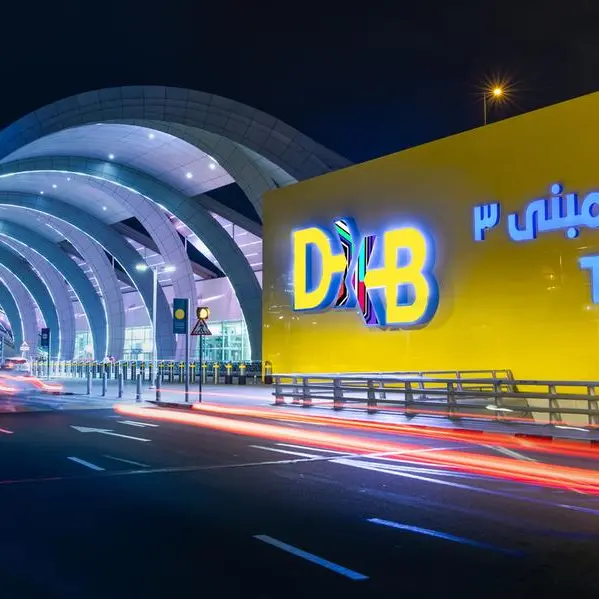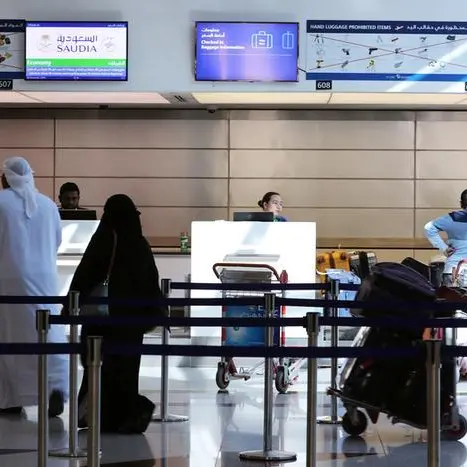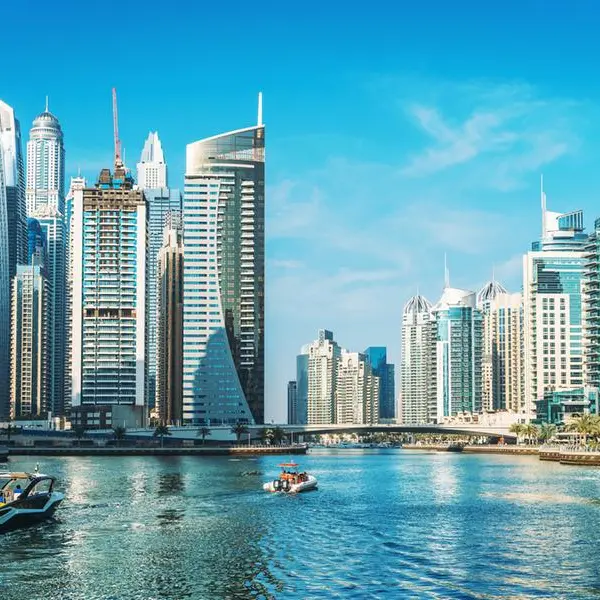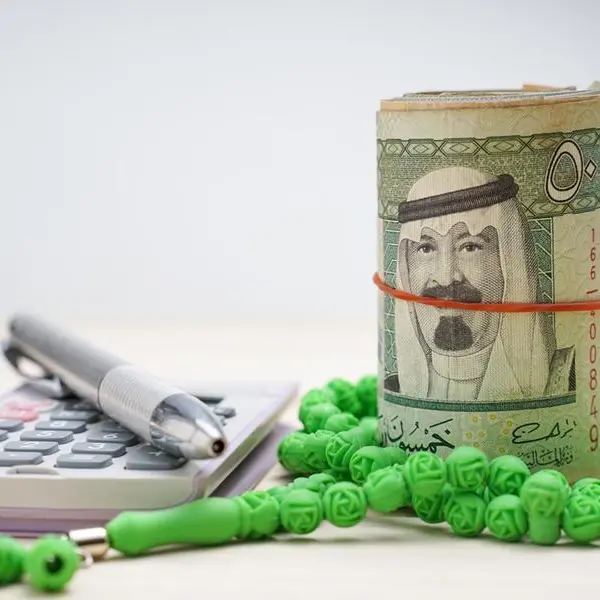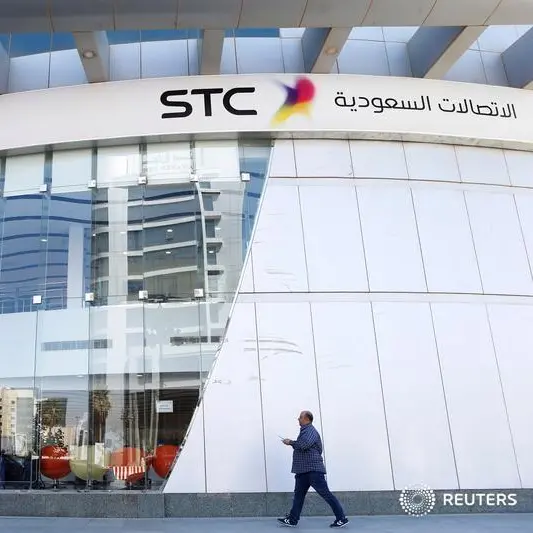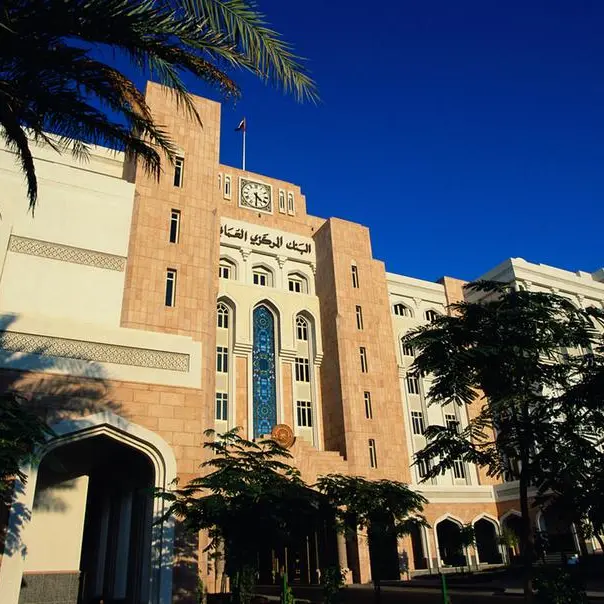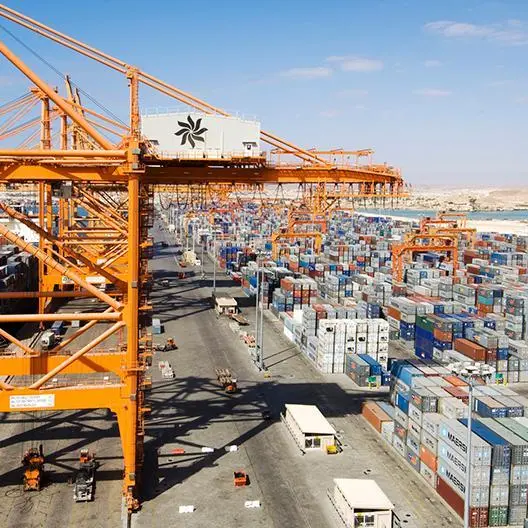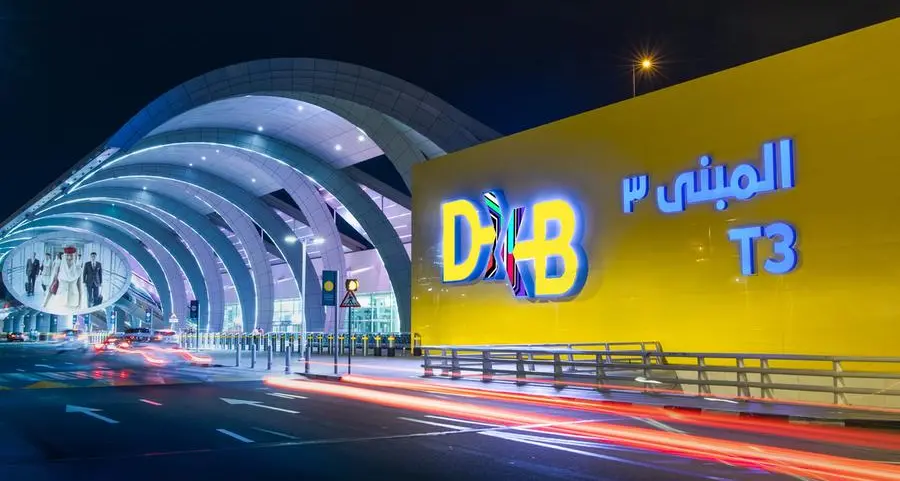PHOTO
25 July 2016
JEDDAH: With oil prices fluctuating on the lower side, Saudi Arabia's plan to increase its non-oil revenues by 2020 under the National Transformation Program (NTP) and also under Vision 2030 has drawn the attention of economists and financial experts both within the Kingdom and overseas.
Under its strategic plan, the Kingdom is targeting two main areas tapping extra revenue sources and privatizing many government agencies and investing the proceeds of privatization in a diversified manner.
"The government's plan of tapping extra revenue sources include value added tax (VAT), sin taxes, green card system, Saudization quota levy and white land fees on one hand and privatizing many government agencies and investing the proceeds of privatization in a diversified manner through the PIF on the other," says Hasan Al-Jabri, CEO of SEDCO Capital.
"We see opportunities arising from lower unemployment among Saudis and hence higher consumer spending on the medium term. Furthermore, white land fees are expected to push real estate development cycle forward, which will benefit the real estate developers," adds Al-Jabri.
"On the other hand, aside from making preparations for receiving an expected 30 million visitors, including Haj and Umrah pilgrims, the privatization program should provide opportunities in the consulting sector in addition to schools and hospitals' operators who could be given an important role in operating some of the public hospitals or schools," Al-Jabri told Arab News in an exclusive interview.
Excerpts of the interview:
Q: A strategic objective of National Transformation Program (NTP) is to increase Saudi Arabia's non-oil revenues from SR163.5 billion in 2015 to SR530 billion by 2020. What are the additional opportunities for investors and residents during this process?
A: In order for us to understand the opportunities available for investors and residents during this process, we need to know how the government plans to increase non-oil revenue.
There are two main areas targeted by the government to increase non-oil revenue: Tapping extra revenue sources such as VAT, sin taxes, green card system, Saudization quota levy and white land fees; and privatizing many government agencies and investing the proceeds of privatization in a diversified manner through the PIF.
As for the first points, we see opportunities arising from lower unemployment among Saudis and hence higher consumer spending on the medium term. Furthermore, white land fees are expected to push real estate development cycle forward, which would also be beneficial for real estate developers.
On the other hand, privatization program should provide opportunities in the consulting sector in addition to schools and hospitals' operators who could be given an important role in operating some of the public hospitals or schools.
Utilizing the existing resources for tourism and industry also provides opportunities of increasing revenue; preparing the Red Sea for tourism with resorts, opening up of 6 flags and most importantly perpetrations for the expected 30 million Umrah visitors will provide great job opportunities, entrepreneurial opportunities and training for young Saudi men and women. This in turn will inject key nonoil revenues into the Saudi economy.
Q: The NTP includes a target for creation of 491,000 new jobs (98.2 thousand per year) in the private sector. How does SEDCO Capital see this job generation drive?
A: We believe the 5-year NTP is in full alignment with the 15-year Vision 2030; the key is to kick-start this process through execution.
This is an amazing opportunity, lower unemployment and higher women participation in the work force should result in higher disposable income even after accounting for subsidies rationalization and new fees or taxes. This in turn should lead to higher spending and hence push the economic activity cycle in the country.
Furthermore, the fact that these jobs would be in the private sector is a great source of relief as it shouldn't have a direct impact on the government budget.
We understand that tourism mainly Haj and Umrah through the hospitality sector will absorb a good number of these new jobs. In addition, sectors such as mining and petrochemicals are among those areas where Saudi Arabia have an unutilized competitive advantage and hence should play an important role in creating those new jobs.
Finally, SMEs that work around and in support of these sectors stand to benefit a great deal from the employment and activity expansions in all of these sectors.
Q: Another important strategic NTP objective includes increasing the capacity of technical and vocational training institutions and linking it to labor market needs. How can the private sector bolster this initiative further?
A: There are two angles at which private sector could bolster this initiative by establishing new specialized training institutions that provide best training materials across the Kingdom and close to different sectors by the specialty of the institute, and by supporting and encouraging in-work training, employee training policies and part-time jobs for university and high school students.
Among the models that can be pursued by some sectors in the private sector is creating vocational centers. Construction contractors and others can all take part in that. This should help young people to gain soft and technical skills that will help them when they join the work force to add value to their employers.
Q: Improving the Kingdom's ranking in the Ease of Doing Business Index from 82 to 20, and the Global Competitiveness Index (GCI) from 25 to 20, is a target proposed in NTP. What could be the progressive role of local investors, academics, technocrats and business leaders in supporting this objective?
A: This needs to be led by the government sector. Improving efficiency and enhancing communication in regards to regulatory changes are among the most important elements in improving competitiveness and ease of doing business in the Kingdom.
This could be attained by attracting leaders from the private sector, which is targeted in the NTP.
Q: Saudi Arabian General Investment Authority (SAGIA) aims to attract $18.7 billion in annual FDI by 2020, which is an increase from $8.1 billion in 2015. What are additional benefits for Saudi industries and professionals from this ambitious goal?
A: There are benefits and challenges that will arise when this goal is achieved for both local industries and professionals.
Challenges will be in the form of increasing competition for local industries and significant productivity enhancement by local professionals.
On the other hand, there are many benefits that can be achieved such as improving quality of products and services in addition to the spread of best practices among local professionals. In addition, more investments mean more jobs and higher income which, in turn, will have a positive economic impact and will drive non-oil GDP growth.
The recent official visit to the United States that saw Deputy Crown Prince Mohammad bin Salman meet with key companies, including Cisco and Facebook, will help kick-start the FDI process and encourage more businesses from all over the world to come and invest in Saudi Arabia. It will also offer many job and training opportunities for the economy and put Saudis on the regional map.
Q: The Royal Commission for Jubail and Yanbu (RCJY) has the second highest cost borne by government for implementing initiatives under the NTP and has been set some major targets for 2020. How do you see Saudi Arabia's move toward a higher value adding manufacturing base?
A: The goals that have been set for the Royal Commission for Jubail and Yanbu and the SR41.6 billion budget that has been booked for its initiatives is a clear indication of the government aiming to improve the higher value adding manufacturing base in Saudi Arabia.
Among the targets that has been set under the NTP for the Royal Commission for Jubail and Yanbu, the most important ones include increasing the number of adding value manufacturing products by 19 percent from 432 to 516 different products, increasing the capacity of the Royal Commission industrial cities by 23 percent from 252 million tons to 309 million tons, and increasing the private sector's new investments in industrial cities by 55 percent from SR681 billion to SR1.07 trillion.
In order to achieve these targets the government is considering many initiatives that are aimed to improve work efficiency and life conditions in the industrial cities, including building new residential, educational, entertainment, logistic and commercial complexes, which explain the large allocation of the NTP budget.
Saudi Arabia is determined more than ever to improve its adding value manufacturing base by depending on the industrial cities and the competitive advantage that it has on the petrochemical downstream activities.
Increasing efficiencies seems a priority for the government in the industrial cities, especially with the government plan to rationalize subsidies in the coming five years.
The main challenge for this plan would be to convince private sector investors to increase their new investments by 55 percent despite subsidies rationalization hoping to cover the difference through higher efficiency.
Q: Oil prices have been highly volatile since mid-2014 and competition is expected between major oil producers to keep markets well supplied. How does this affect or benefit Saudi Arabia's economic indicators?
A: A well supplied oil market is now seen as the business model adopted by the OPEC members. As a result, the tussle of gaining market share will be at the forefront of policy makers in Saudi Arabia. The net result will mean range-bound oil prices for the foreseeable future, which will impair the oil component of the country's GDP.
However this will intensify the diversification of current nonoil related income channels for the Kingdom and we expect non-oil GDP to exhibit healthy growth. With the fiscal budget breakeven level of oil for 2016 expected to be around the mid $80 level, running budget deficits will be expected over the near term as we expect capital expenditure to be robustly maintained in the coming few years by the government.
And given the possibility of where the new equilibrium of oil prices will settle in the future, this in our view is the single biggest driver of the implementation of Vision 2030 and NTP 2020.
Q: Careful attention has been paid to the private sector participation in many areas of the NTP. What is your message to the Saudi private sector?
A: The private sector is the main driver of most economies. In Saudi Arabia there is a strong potential in many sectors where we could see even more Saudi companies competing at a global level. The private sector needs to focus on areas where it has a competitive advantage and should base their expectation on a new regulatory framework that is characterized by lower direct financial aid but a higher overall support level, including better infrastructure, transparent and business friendly regulations and enhanced logistic solutions.
Q: Credit growth is expected to remain resilient in Saudi Arabia despite a slowdown in monetary aggregates, according to economists. How do you see the fiscal strategy in the years ahead?
A: Regarding credit growth, we see contraction in credit growth in the banking sector in the near future. Areas like home financing, SME lending and real estate development lending will be catalyst areas for segmental loan growth in the banking system.
On the fiscal strategy side and as per the targets and initiatives of the Ministry of Finance in the NTP documents, we can draw the following outlines for the fiscal budget of Saudi Arabia by 2020. Saudi Arabia plans to grow its spending moderately to reach a balanced budget. This can be achieved through targeting specific goals in terms of revenue generation and expenses management.
Revenue generation can be achieved by increasing nonoil revenue to SR530 billion from SR163.5 billion by introducing VAT and sin taxes in addition to increase fees revenue; privatizing government agencies and government related entities, and investing in the privatization through the Public Investment Fund; allow debt to GDP ratio to reach 30 percent by 2020 through local and international borrowing; and introducing a green card system for foreigners living in Saudi Arabia.
Management expenses can be streamlined by reducing water and energy subsidies by SR200 billion and reducing nonoil related subsidies by 20 percent; increasing the efficiency of government agencies and ministries in addition to increase their dependence on internal revenue sources; lowering expenses on salaries and wages in absolute and relative terms to SR456 billion from SR480 billion and to 40 percent of total expenses from 45 percent; decreasing delayed projects to 40 percent of total projects from the current 70 percent.
Q: Saudi Aramco's IPO is expected to attract new capital to diversify the Kingdom's economy and increase global confidence in the company. How do you analyze this important milestone in Saudi Arabia's development journey?
A: Saudi Aramco's IPO benefits both the Kingdom and the company itself. The Kingdom's immediate benefit will be in terms of reducing the dependence on oil prices by investing IPO proceeds on several assets with the aim of achieving capital appreciation in addition to cash distributions to support government budget.
On the other hand, Saudi Aramco will enjoy better efficiency and higher productivity as foreign investors demand higher profitability. Furthermore, Saudi Aramco will be forced to become more transparent given existing regulations by supervisory bodies that require listed companies to announce quarterly financial statements and annual reports in addition to announcing any major development to the public in a timely manner.
JEDDAH: With oil prices fluctuating on the lower side, Saudi Arabia's plan to increase its non-oil revenues by 2020 under the National Transformation Program (NTP) and also under Vision 2030 has drawn the attention of economists and financial experts both within the Kingdom and overseas.
Under its strategic plan, the Kingdom is targeting two main areas tapping extra revenue sources and privatizing many government agencies and investing the proceeds of privatization in a diversified manner.
"The government's plan of tapping extra revenue sources include value added tax (VAT), sin taxes, green card system, Saudization quota levy and white land fees on one hand and privatizing many government agencies and investing the proceeds of privatization in a diversified manner through the PIF on the other," says Hasan Al-Jabri, CEO of SEDCO Capital.
"We see opportunities arising from lower unemployment among Saudis and hence higher consumer spending on the medium term. Furthermore, white land fees are expected to push real estate development cycle forward, which will benefit the real estate developers," adds Al-Jabri.
"On the other hand, aside from making preparations for receiving an expected 30 million visitors, including Haj and Umrah pilgrims, the privatization program should provide opportunities in the consulting sector in addition to schools and hospitals' operators who could be given an important role in operating some of the public hospitals or schools," Al-Jabri told Arab News in an exclusive interview.
Excerpts of the interview:
Q: A strategic objective of National Transformation Program (NTP) is to increase Saudi Arabia's non-oil revenues from SR163.5 billion in 2015 to SR530 billion by 2020. What are the additional opportunities for investors and residents during this process?
A: In order for us to understand the opportunities available for investors and residents during this process, we need to know how the government plans to increase non-oil revenue.
There are two main areas targeted by the government to increase non-oil revenue: Tapping extra revenue sources such as VAT, sin taxes, green card system, Saudization quota levy and white land fees; and privatizing many government agencies and investing the proceeds of privatization in a diversified manner through the PIF.
As for the first points, we see opportunities arising from lower unemployment among Saudis and hence higher consumer spending on the medium term. Furthermore, white land fees are expected to push real estate development cycle forward, which would also be beneficial for real estate developers.
On the other hand, privatization program should provide opportunities in the consulting sector in addition to schools and hospitals' operators who could be given an important role in operating some of the public hospitals or schools.
Utilizing the existing resources for tourism and industry also provides opportunities of increasing revenue; preparing the Red Sea for tourism with resorts, opening up of 6 flags and most importantly perpetrations for the expected 30 million Umrah visitors will provide great job opportunities, entrepreneurial opportunities and training for young Saudi men and women. This in turn will inject key nonoil revenues into the Saudi economy.
Q: The NTP includes a target for creation of 491,000 new jobs (98.2 thousand per year) in the private sector. How does SEDCO Capital see this job generation drive?
A: We believe the 5-year NTP is in full alignment with the 15-year Vision 2030; the key is to kick-start this process through execution.
This is an amazing opportunity, lower unemployment and higher women participation in the work force should result in higher disposable income even after accounting for subsidies rationalization and new fees or taxes. This in turn should lead to higher spending and hence push the economic activity cycle in the country.
Furthermore, the fact that these jobs would be in the private sector is a great source of relief as it shouldn't have a direct impact on the government budget.
We understand that tourism mainly Haj and Umrah through the hospitality sector will absorb a good number of these new jobs. In addition, sectors such as mining and petrochemicals are among those areas where Saudi Arabia have an unutilized competitive advantage and hence should play an important role in creating those new jobs.
Finally, SMEs that work around and in support of these sectors stand to benefit a great deal from the employment and activity expansions in all of these sectors.
Q: Another important strategic NTP objective includes increasing the capacity of technical and vocational training institutions and linking it to labor market needs. How can the private sector bolster this initiative further?
A: There are two angles at which private sector could bolster this initiative by establishing new specialized training institutions that provide best training materials across the Kingdom and close to different sectors by the specialty of the institute, and by supporting and encouraging in-work training, employee training policies and part-time jobs for university and high school students.
Among the models that can be pursued by some sectors in the private sector is creating vocational centers. Construction contractors and others can all take part in that. This should help young people to gain soft and technical skills that will help them when they join the work force to add value to their employers.
Q: Improving the Kingdom's ranking in the Ease of Doing Business Index from 82 to 20, and the Global Competitiveness Index (GCI) from 25 to 20, is a target proposed in NTP. What could be the progressive role of local investors, academics, technocrats and business leaders in supporting this objective?
A: This needs to be led by the government sector. Improving efficiency and enhancing communication in regards to regulatory changes are among the most important elements in improving competitiveness and ease of doing business in the Kingdom.
This could be attained by attracting leaders from the private sector, which is targeted in the NTP.
Q: Saudi Arabian General Investment Authority (SAGIA) aims to attract $18.7 billion in annual FDI by 2020, which is an increase from $8.1 billion in 2015. What are additional benefits for Saudi industries and professionals from this ambitious goal?
A: There are benefits and challenges that will arise when this goal is achieved for both local industries and professionals.
Challenges will be in the form of increasing competition for local industries and significant productivity enhancement by local professionals.
On the other hand, there are many benefits that can be achieved such as improving quality of products and services in addition to the spread of best practices among local professionals. In addition, more investments mean more jobs and higher income which, in turn, will have a positive economic impact and will drive non-oil GDP growth.
The recent official visit to the United States that saw Deputy Crown Prince Mohammad bin Salman meet with key companies, including Cisco and Facebook, will help kick-start the FDI process and encourage more businesses from all over the world to come and invest in Saudi Arabia. It will also offer many job and training opportunities for the economy and put Saudis on the regional map.
Q: The Royal Commission for Jubail and Yanbu (RCJY) has the second highest cost borne by government for implementing initiatives under the NTP and has been set some major targets for 2020. How do you see Saudi Arabia's move toward a higher value adding manufacturing base?
A: The goals that have been set for the Royal Commission for Jubail and Yanbu and the SR41.6 billion budget that has been booked for its initiatives is a clear indication of the government aiming to improve the higher value adding manufacturing base in Saudi Arabia.
Among the targets that has been set under the NTP for the Royal Commission for Jubail and Yanbu, the most important ones include increasing the number of adding value manufacturing products by 19 percent from 432 to 516 different products, increasing the capacity of the Royal Commission industrial cities by 23 percent from 252 million tons to 309 million tons, and increasing the private sector's new investments in industrial cities by 55 percent from SR681 billion to SR1.07 trillion.
In order to achieve these targets the government is considering many initiatives that are aimed to improve work efficiency and life conditions in the industrial cities, including building new residential, educational, entertainment, logistic and commercial complexes, which explain the large allocation of the NTP budget.
Saudi Arabia is determined more than ever to improve its adding value manufacturing base by depending on the industrial cities and the competitive advantage that it has on the petrochemical downstream activities.
Increasing efficiencies seems a priority for the government in the industrial cities, especially with the government plan to rationalize subsidies in the coming five years.
The main challenge for this plan would be to convince private sector investors to increase their new investments by 55 percent despite subsidies rationalization hoping to cover the difference through higher efficiency.
Q: Oil prices have been highly volatile since mid-2014 and competition is expected between major oil producers to keep markets well supplied. How does this affect or benefit Saudi Arabia's economic indicators?
A: A well supplied oil market is now seen as the business model adopted by the OPEC members. As a result, the tussle of gaining market share will be at the forefront of policy makers in Saudi Arabia. The net result will mean range-bound oil prices for the foreseeable future, which will impair the oil component of the country's GDP.
However this will intensify the diversification of current nonoil related income channels for the Kingdom and we expect non-oil GDP to exhibit healthy growth. With the fiscal budget breakeven level of oil for 2016 expected to be around the mid $80 level, running budget deficits will be expected over the near term as we expect capital expenditure to be robustly maintained in the coming few years by the government.
And given the possibility of where the new equilibrium of oil prices will settle in the future, this in our view is the single biggest driver of the implementation of Vision 2030 and NTP 2020.
Q: Careful attention has been paid to the private sector participation in many areas of the NTP. What is your message to the Saudi private sector?
A: The private sector is the main driver of most economies. In Saudi Arabia there is a strong potential in many sectors where we could see even more Saudi companies competing at a global level. The private sector needs to focus on areas where it has a competitive advantage and should base their expectation on a new regulatory framework that is characterized by lower direct financial aid but a higher overall support level, including better infrastructure, transparent and business friendly regulations and enhanced logistic solutions.
Q: Credit growth is expected to remain resilient in Saudi Arabia despite a slowdown in monetary aggregates, according to economists. How do you see the fiscal strategy in the years ahead?
A: Regarding credit growth, we see contraction in credit growth in the banking sector in the near future. Areas like home financing, SME lending and real estate development lending will be catalyst areas for segmental loan growth in the banking system.
On the fiscal strategy side and as per the targets and initiatives of the Ministry of Finance in the NTP documents, we can draw the following outlines for the fiscal budget of Saudi Arabia by 2020. Saudi Arabia plans to grow its spending moderately to reach a balanced budget. This can be achieved through targeting specific goals in terms of revenue generation and expenses management.
Revenue generation can be achieved by increasing nonoil revenue to SR530 billion from SR163.5 billion by introducing VAT and sin taxes in addition to increase fees revenue; privatizing government agencies and government related entities, and investing in the privatization through the Public Investment Fund; allow debt to GDP ratio to reach 30 percent by 2020 through local and international borrowing; and introducing a green card system for foreigners living in Saudi Arabia.
Management expenses can be streamlined by reducing water and energy subsidies by SR200 billion and reducing nonoil related subsidies by 20 percent; increasing the efficiency of government agencies and ministries in addition to increase their dependence on internal revenue sources; lowering expenses on salaries and wages in absolute and relative terms to SR456 billion from SR480 billion and to 40 percent of total expenses from 45 percent; decreasing delayed projects to 40 percent of total projects from the current 70 percent.
Q: Saudi Aramco's IPO is expected to attract new capital to diversify the Kingdom's economy and increase global confidence in the company. How do you analyze this important milestone in Saudi Arabia's development journey?
A: Saudi Aramco's IPO benefits both the Kingdom and the company itself. The Kingdom's immediate benefit will be in terms of reducing the dependence on oil prices by investing IPO proceeds on several assets with the aim of achieving capital appreciation in addition to cash distributions to support government budget.
On the other hand, Saudi Aramco will enjoy better efficiency and higher productivity as foreign investors demand higher profitability. Furthermore, Saudi Aramco will be forced to become more transparent given existing regulations by supervisory bodies that require listed companies to announce quarterly financial statements and annual reports in addition to announcing any major development to the public in a timely manner.
© Arab News 2016

